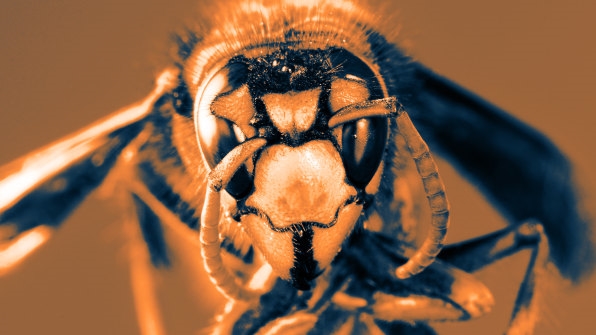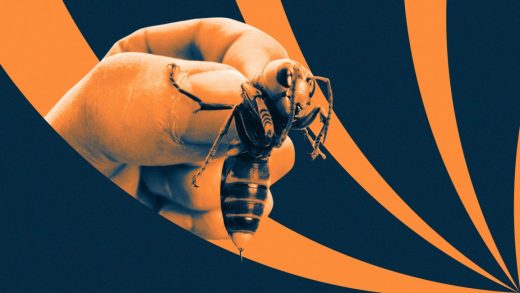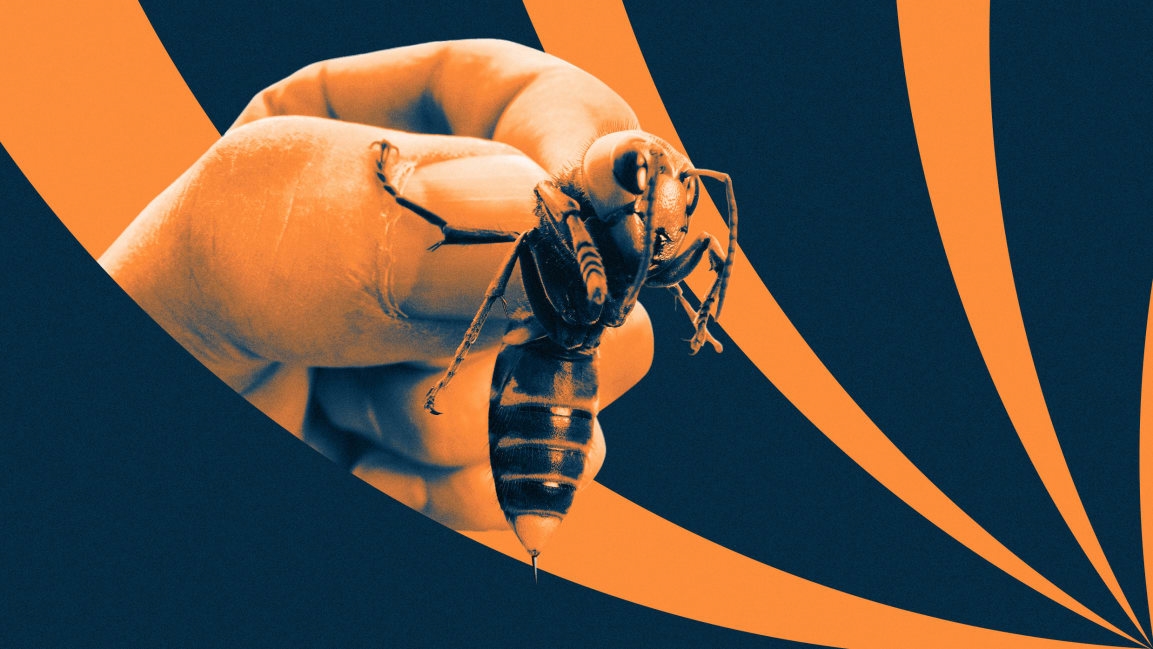The government may have bungled the coronavirus, but it wants to get a head start on murder hornets
In the middle of the battle against the coronavirus, a new apocalyptic threat has reared its thorax: murder hornets. But while government was slow to respond to the initial reports of the spreading virus, at least one House member is trying to get ahead of the curve before we are overwhelmed by invasive bugs that threaten our honeybee populations.
Murder hornets—technically the Asian giant hornet—fall under the jurisdiction of the House Committee on Natural Resources, chaired by Representative Raúl Grijalva, a Democrat from Arizona. Last week, he introduced the bill, the “Murder Hornet Eradication Act,” as a way to direct funding to states to cull the population before it swells.
If passed, the bill would share a total of $4 million per year, from 2021 to 2025, among any states in need of resources to remove the insects, which, at two inches in length, are the world’s largest hornet species.
The bill is still at an early stage and would first need a hearing within the Subcommittee on Water, Oceans and Wildlife before it can be voted on by the full committee and then the House. It’s unlikely to be passed as a standalone bill, says Adam Sarvana, Grijalva’s communications director, so the hope is that it can be part of an end-of-year Senate package.

Still, the committee views the insects as an important threat, which is why it’s drawn up the act now, even amid the pandemic. The hornets are disastrous predators to honeybees, which they murder by biting off their heads, hence their sinister sobriquet. A significant reduction in the population of bees could be devastating to crop production; Grijalva’s press release mentions that apples, blueberries, and cherries could be at risk of becoming “infeasible to produce.”
Lora Snyder, staff director of the Subcommittee on Water, Oceans and Wildlife, who wrote the bill, notes that Grijalva is an “avid defender” of the Endangered Species Act, the 1973 conservation law that was designed to protect threatened wildlife. “We need to do everything we can to protect our pollinators,” Snyder says.
Snyder says her committee continuously sees the negative impacts of invasive species, which are extremely expensive to handle. And, in a lot of cases, the government didn’t act swiftly enough to curb the invasions. “It didn’t happen in the case of nutria, Asian carp, zebra mussels, or lionfish,” she says, “that wreak havoc both economically and to the ecosystem.”
The bill was modeled on a similar 2003 act intended to cull another invasive species, the nutria, or swamp rat: chubby critters that can eat 25% of their own body weight each day. Nutria were introduced to the U.S. by fur ranchers and were found to be destroying marshland in high numbers in Louisiana and Maryland. But that bill only directed funds to those two states, which was unhelpful when the rats migrated to others. By directing the hornet funds more generally, instead of just Washington State, where the hornets have been found so far, Snyder says the government would have the authority to finance eradication in other states, if the hornets traveled or entered the country in shipping packaging, as the original fertile queen hornet was thought to have done.
If the bill is passed, it would become the responsibility of the Secretary of the Interior to administer grants to states, which would then decide how to address the issue. Washington State University and Washington State Department of Agriculture have started designing a program for trapping the hornets and destroying nests, and other states are likely to establish detection protocols for when people find them on their properties. Though there’s no easy way for bees to protect themselves, bees in Japan have developed a technique where they form a ball that can “scorch” a hornet with heat produced by quick movements and vibrations. American bees, however, have yet to develop similar defenses.
Murder hornets have sent Twitter abuzz with chatter about the bugs being the next plague after the coronavirus and yet another sign of the end of the world. (Incredibly, The Simpsons predicted a deadly virus followed by a swarm of killer bees in an episode in 1993.) And, though the effect on humans is less of a concern for the committee, they can reportedly sting people through bee suits, which feels like a “hot nail” entering the body, and they apparently killed a man in Spain on Sunday after he was stung on the eyebrow.
(8)



